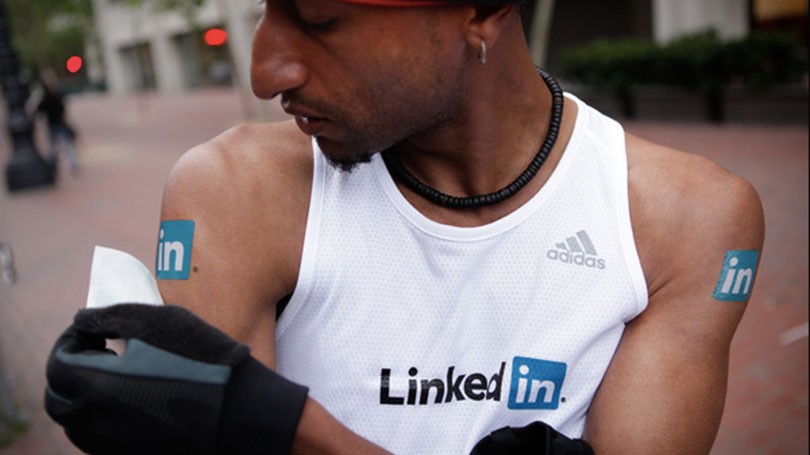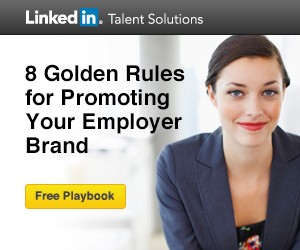4 Strategies You Should NOT Leverage on LinkedIn
If you thought this was going to be just another blog post with 4 obvious LinkedIn profile tips, then sit down and grab a pencil, because I'm going strategic on you.
This time I’d like to talk to you about what NOT to do on LinkedIn in order to be successful. As a matter or fact, I can guarantee that if you follow these tips and implement them with your team, you will become 9 gazillion percent more effective on LinkedIn.
So here come the 4 strategic no-no's that if avoided will help you engage your team and become a LinkedIn superhero:
1. Stop cramming down communication from leadership
Wait, what?! How does "cram down communication" have anything to do with LinkedIn?!
Here's how: when you as a leader want to control your employer brand and are tempted to bark at people about exactly what they should say on LinkedIn, they resent you. And if they resent you, they don't engage (unless coerced, and coercing takes a lot of resources). So now, instead of collaborating as a team to work more efficiently, they're all using LinkedIn as free agents to get their next jobs.
What a waste.
Want to know how to communicate more effectively and get people to adopt LinkedIn? Make this your mantra: “win-win through opt-in.” Give people a chance to opt out. It’s counterintuitive, but the science shows it works far better than you’d think it would,
2. Don’t allow executives to make decisions for contributors and vice versa
Executives and early careerists come at social media from completely different places: executives generally have robust real world networks, integrated personal and professional networks, and a clear idea of their career story arc. Where they need help is in adjusting from broadcast technology to social media. To an executive with a strong foundation in networking and a weak foundation in technology, “online networking skills” seems tactical, while “implementing LinkedIn” seems strategic.
Early careerists are the opposite. They generally have an understanding of technology but a vague network that's a mile wide and an inch deep. To them, technology is tactical; networking is strategic.
Training programs that aren't constructed with input from both sides are destined to miss the mark for one or both groups, and may even reinforce differences rather than bring people together.
How does this impact LinkedIn effectiveness? Here's a true story from a client of mine: executives brought in a 24-year-old to do LinkedIn training for the senior team. The woman was brilliant, charismatic, but had no idea of where these executives were coming from. The presentation was a waste of time and the executives left the session not understanding LinkedIn. They opted not to invest in social recruiting and ended up extending their learning curve by 2 years.
3. Don’t centralize responsibility
LinkedIn democratizes communication. As such, LinkedIn initiatives need to focus on helping people understand how using LinkedIn helps them personally. Monitoring from the top is great, but trying to control everything employees say on the platform is going to lead to problems.
The hallmark of top-down programs is communication to employees only about why using LinkedIn will be good for the company—and nothing about why it will be good for the employee. The other hallmark? Nothing happens.
To avoid that, show your employees how working together is good for both the company and the employee. (How to do this is a longer subject; the short of it goes like this: treat one another like adults.)
4. Stop going all offense, all the time
Raise your hand if you LOVE when people in your network spam you with unwanted solicitations.
Social media is about engagement. If you want to maximize the benefits you get from LinkedIn, start by optimizing your profile; before you engage with someone, be someone they'll want to engage with. This will make your outbound messages more impactful.
As a company, this requires an emphasis on messaging first, activity second.
Want to hear more?
I'll go into more detail on these topics at Talent Connect (you can register for the live stream here) and show the connective tissue more between organizational habits and personal LinkedIn use. For those of you who are going, I hope to see you in my session: sKnock It Off: a 4 Point "Stop Doing" List That Will Make You 9 Gazillion Percent* More Effective on LinkedIn (*Rough Estimate).
And if I don't, no hard feelings. The line up for the Wednesday afternoon slot is strong all the way around.)
For those who can't make it, something you may be interested in: I have a dry run planned for Friday, October 11, at 3:30 Central time, and I'll be opening it up as a webinar. No registration necessary, just bookmark this link: http://join.me/workforcemarketing and hop on when the time hits.
See you online!
Topics: LinkedIn best practices
Related articles



